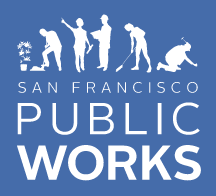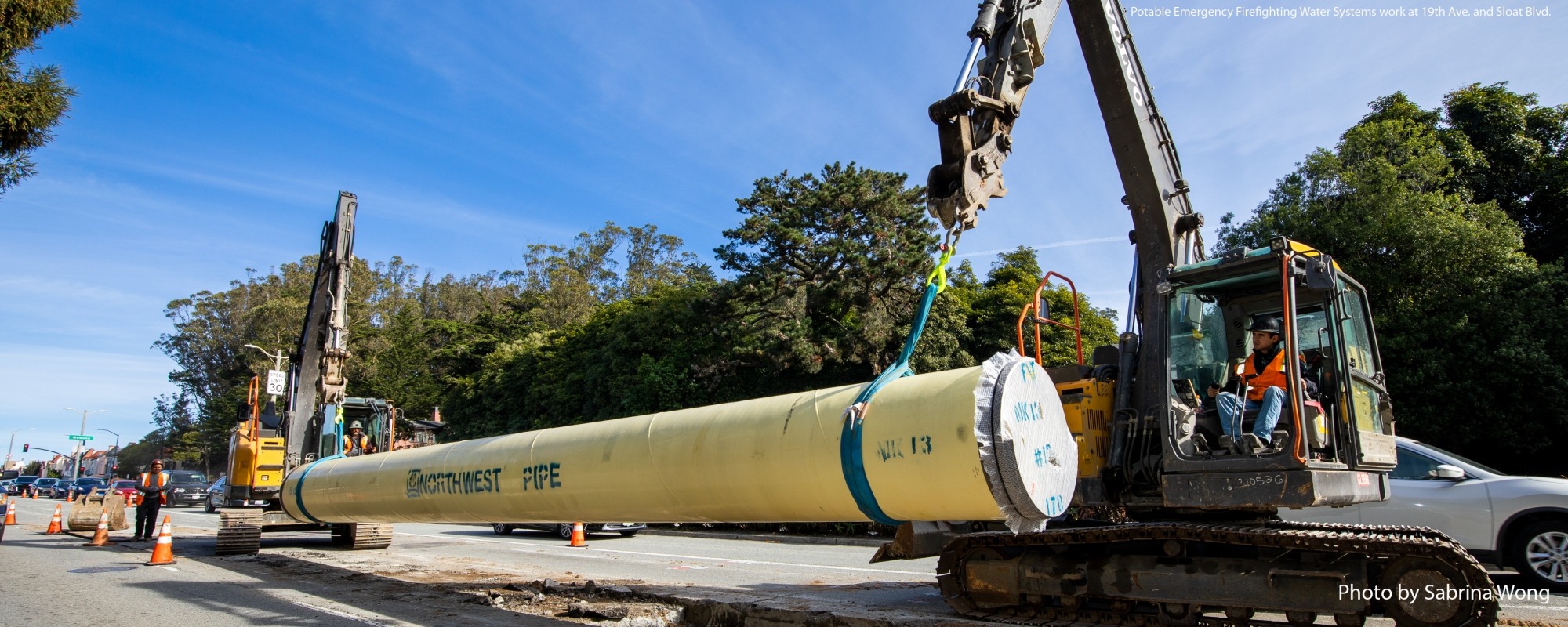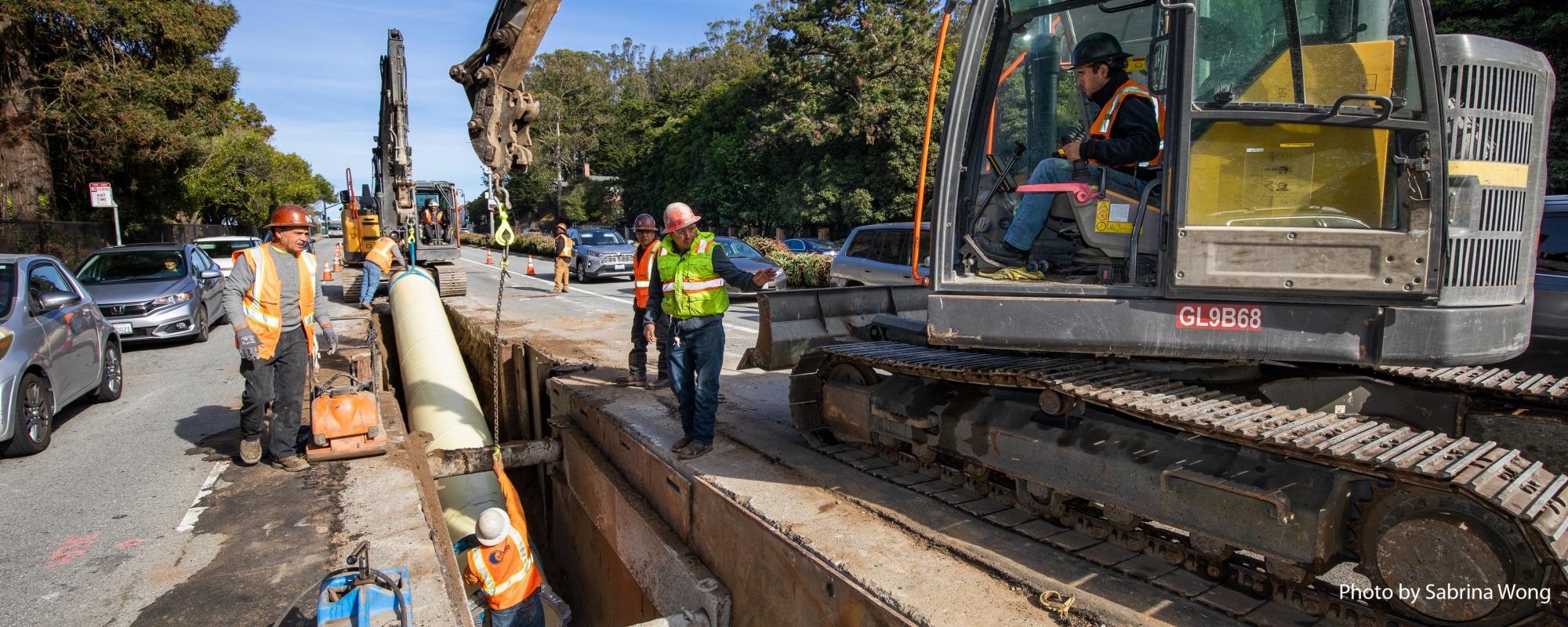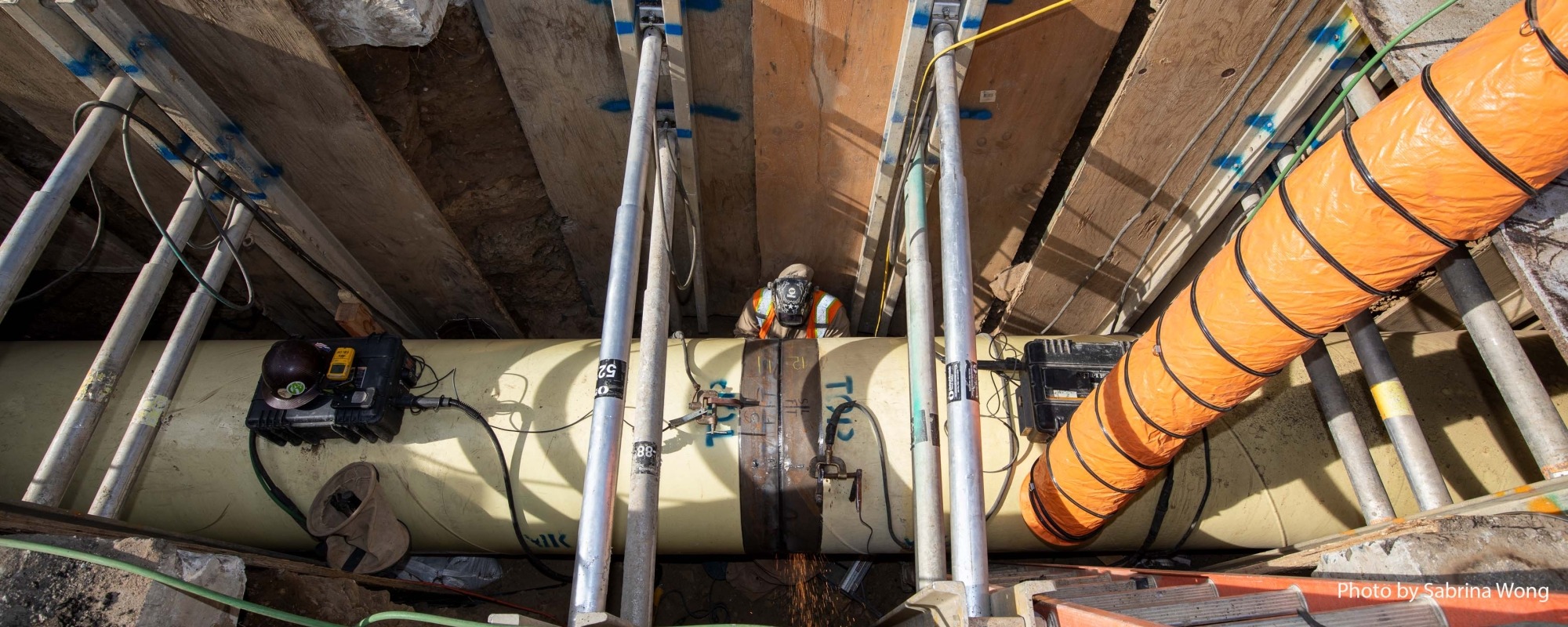Emergency Firefighting Water System
What is the Emergency Firefighting Water System?
The Emergency Firefighting Water System (EFWS) includes several methods of delivering water to suppress fires during emergency situations. EFWS is vitally important to fight fires following an earthquake – as well as large, non-earthquake-related blazes – and protect against the loss of life, homes and businesses.
One EFWS component is a high-pressure fire-suppression water system, formerly known as Auxiliary Water Supply System (AWSS), which was originally built in the decade following the catastrophic 1906 San Francisco earthquake. It consists of a resilient 135-mile high-pressure pipeline network, a high-elevation reservoir, two large-capacity tanks, two high-pressure seawater pumping stations and manifolds that allow fireboats to inject bay water into the City’s pipelines.
The Potable Emergency Firefighting Water System (PEFWS) will bring a seismically resilient high‐pressure firefighting water system to the western neighborhoods of San Francisco, while also creating a seismically resilient pipeline that can supply drinking water to the westside during non‐fire situations.
Fireboat manifolds allow fire boats to pump seawater from the bay into the EFWS. Existing fireboat manifolds at Fort Mason and Pier 33 ½ are located on piers of unknown condition and are likely susceptible to damage from earthquakes. Rehabilitation of manifolds and connector pipelines is required at Fort Mason and Pier 35 ½ (relocated from Pier 33 ½) to provide adequate access for firefighters.
Explore the other ESER 2020 Bond Components
- 9‐1‐1 Call Center
- Fire Stations and Support Facilities
- District Police Stations and Support Facilities
- Disaster Response Facilities
What is the ESER bond program?
Earthquake Safety and Emergency Response (ESER) is San Francisco's bond program to strategically address critical public safety needs in the City. The program identifies seismic improvements and upgrades to City-owned facilities that are needed to help safeguard San Francisco. Learn more here.





